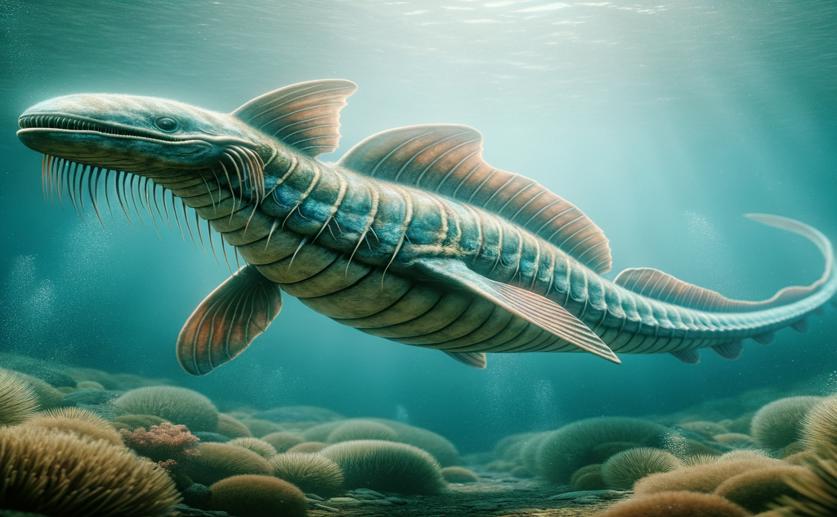
Discovering the Belly Features of a Rare Ancient Sea Creature
Jenn Hoskins
30th April, 2024

Image Source: Natural Science News, 2024
Key Findings
- Researchers used advanced 3D imaging to study an ancient predator, Tanglangia longicaudata, from 518 million years ago
- The study revealed new details of its body structure, including its unique front limbs and elongated tail
- These findings help understand the evolution of arthropods, including the lineage leading to modern spiders and scorpions
References
Main Study
1) Unveiling the ventral morphology of a rare early Cambrian great appendage arthropod from the Chengjiang biota of China
Published 29th April, 2024
https://doi.org/10.1186/s12915-024-01889-y
Related Studies
2) Morphology and function in the Cambrian Burgess Shale megacheiran arthropod Leanchoilia superlata and the application of a descriptive matrix.
3) A 520 million-year-old chelicerate larva.
4) Three-dimensionally preserved minute larva of a great-appendage arthropod from the early Cambrian Chengjiang biota.
5) Chelicerate neural ground pattern in a Cambrian great appendage arthropod.



 25th March, 2024 | Jim Crocker
25th March, 2024 | Jim Crocker